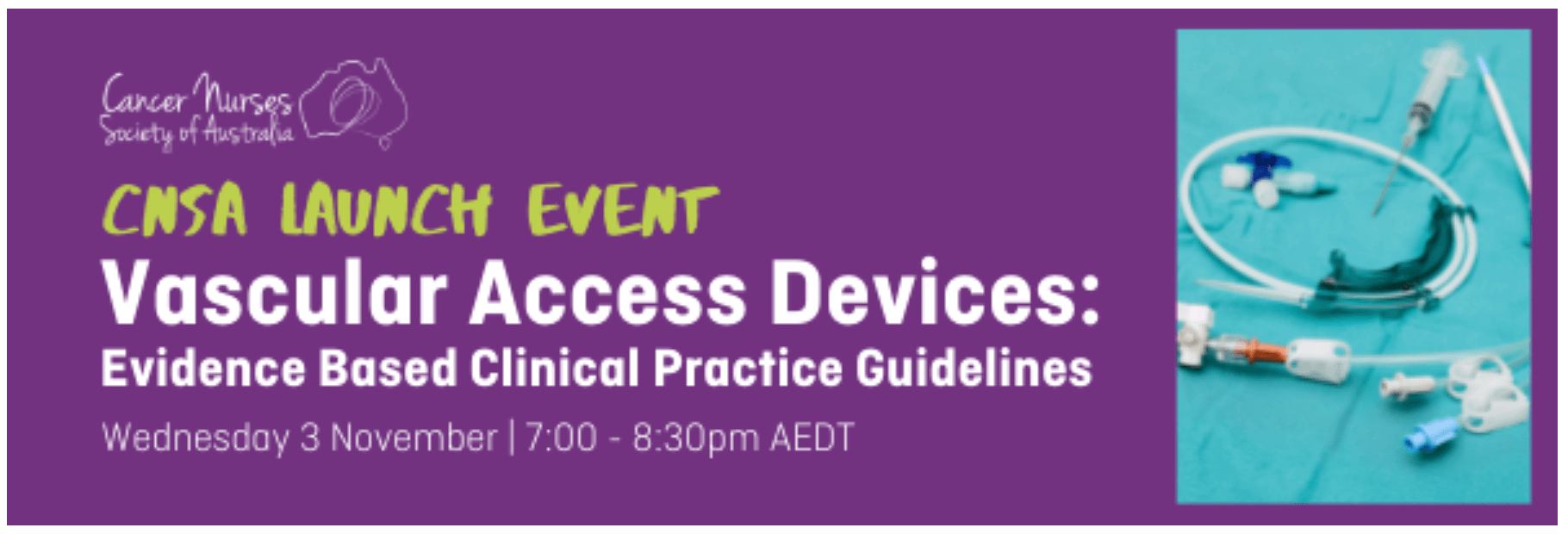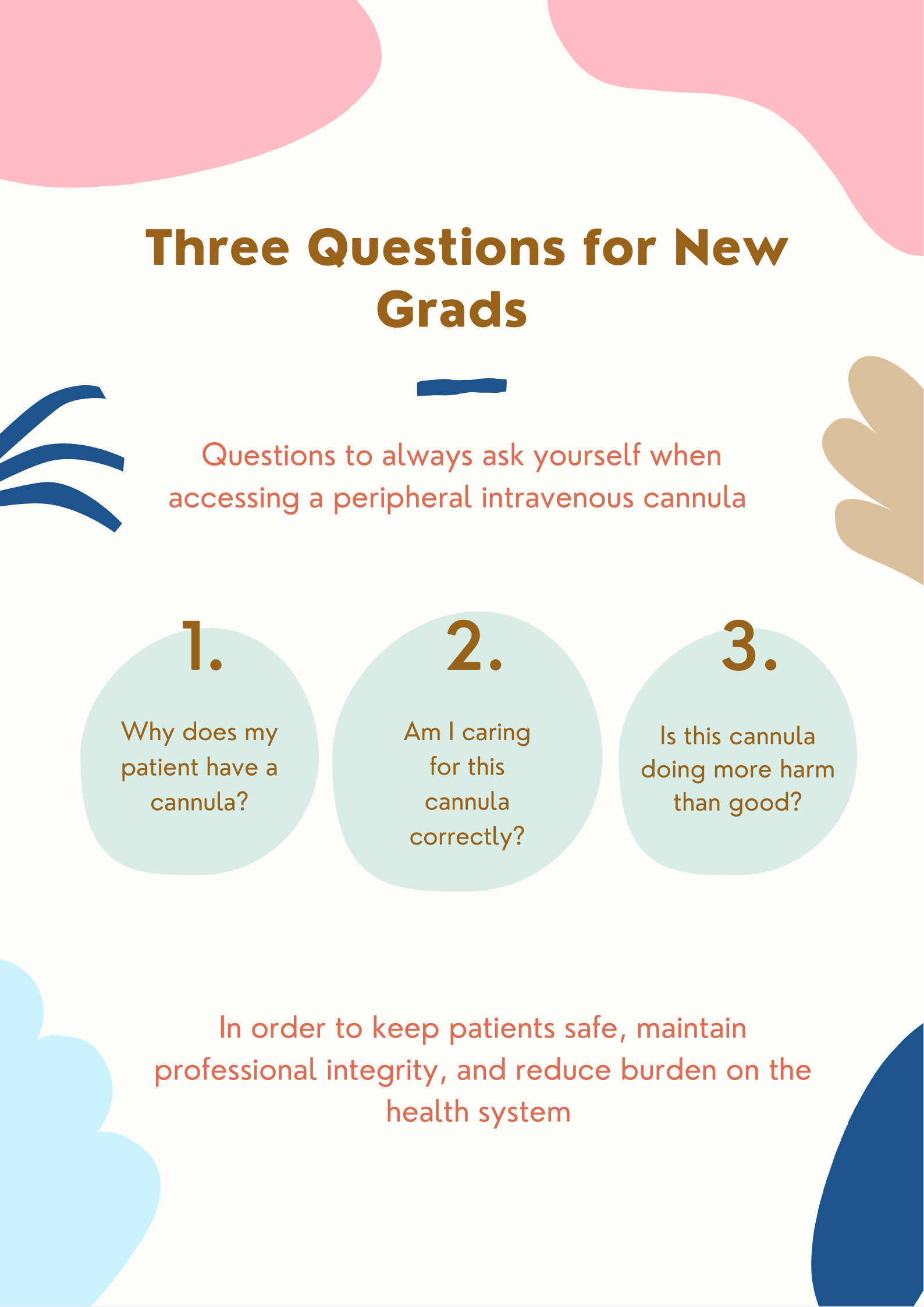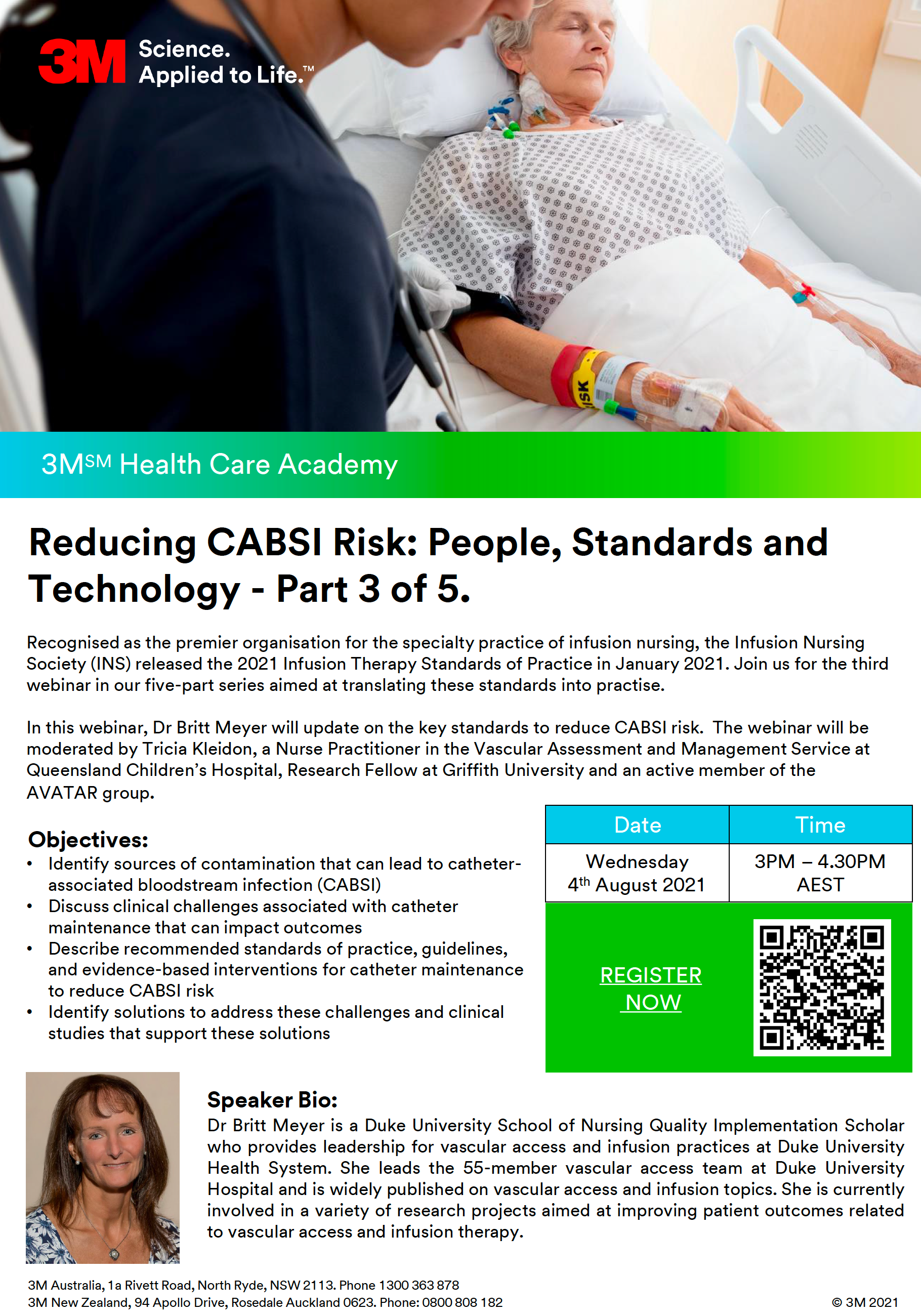Posted in evidence-based practice
Taking Blood Samples from a PIVC: Yes or No?
Posted by Dr Linda Coventry
on 21 March 2023
We are often asked if it's okay to take blood samples from a peripheral intravenous catheter (aka PIVC, cannula). In Australia, each state has a different policy, however, most allow blood draws on insertion of the cannula.
The Infusion Nurses Society Standards of Practice 8th edition (2021, page S129) has the following recommendations, based on evidence:
"Risks associated with sampling from a PIVC include hemolysis of the sample, contamination of the sample from infusing...
| Posted in:peripheral intravenous catheterevidence-based practiceblood sampling |
Vascular Access Device Patency Assessment & Education
Posted
on 24 February 2022
)
Topic: Vascular Access Device: evidence versus current practice for patency assessment & education, brought to you by the Cancer Nurses Society of Australia (CNSA).
Patency assessment: Does your workplace use a standardised, validated tool? What do you assess – blood return, flushing, both? What are the education and competency recommendations for vascular access? Join us to discuss the evidence versus our current practice and walk through two validated assessment to...
| Posted in:educationvascular access devicesguidelinesevidence-based practice |
Arterial Catheters: The Basics
Posted by Lizzy Ostwald
on 29 October 2021
)
Every year, approximately 200,000 Australians will have an arterial catheter (AC) inserted in order for clinicians to gain a more comprehensive understanding of haemodynamic stability through ongoing blood pressure monitoring, access for phlebotomy sampling, and painless blood gas sampling1. Seen most commonly in the intensive care unit and operating theatre, these peripheral catheters are associated with significantly increased risks when compared to peripheral venous devices and as such mus...
| Posted in:vascular access devicesevidence-based practicearterial catheter |
CNSA Vascular Access Devices: Evidence Based Clinical Practice Guidelines: Online launch 3 November!
Posted by Kerrie Curtis
on 28 October 2021
)
Vascular access devices are lifelines for patients with cancer for the administration of prescribed therapies and supportive care. Evidence-based management is key in the prevention of vascular access complications and premature removal.
The revised Cancer Nurses Society of Australia (CNSA) Vascular Access Devices: Evidence Based Clinical Practice Guidelines detail the latest evidence and recommendations for patients with cancer with peripheral intravenous cannulas and central venous ac...
| Posted in:peripheral intravenous cathetercentral vascular access deviceseducationpatient safetyguidelinesevidence-based practice |
Why catheter-to-vein ratio matters!
Posted by Gillian Ray-Barruel
on 19 August 2021
Did you know that certain catheter-to-vein (CVR) ratios can have twice the risk of thrombosis in patients with cancer?
Dr Rebecca Sharp from the University of South Australia (UniSA) and Australian Vascular Access Society has published a study in BMJ Open that analysed the outcomes of more than 2400 patients from 4 hospitals in Australia and New Zealand who received a peripherally inserted central catheter (PICC). The study found that up to 6% of patients with cancer who had received chemo...
| Posted in:catheter failurecentral vascular access devicesPICCultrasoundevidence-based practice |
3M Health Care Academy - The 2021 INS Infusion Therapy Standards of Practice: Reducing CABSI Risk: People, Standards and Technology
Posted
on 19 July 2021
| Posted in:infection preventionIV managementvascular access devicesguidelinesevidence-based practicecatheter-associated bloodstream infection |
PIVC Essentials: Three Tips for New Grads
Posted by Lizzy Ostwald
on 28 June 2021
)
"Hi, I'm Lizzy, and I'm in my final semester of a dual bachelors of nursing and midwifery, and am fortunate to be undertaking a Winter Research program with the AVATAR group. I have decided to focus on tips for a new grad as my first topic as I am going to be a grad at the start of next year, and I believe that a lot of benefit can be gained from easy access to summarised, accurate information."
Coming into the hospital setting as a graduate nurse, or 'grad...
| Posted in:peripheral intravenous cathetercannulaIV managementevidence-based practice |










